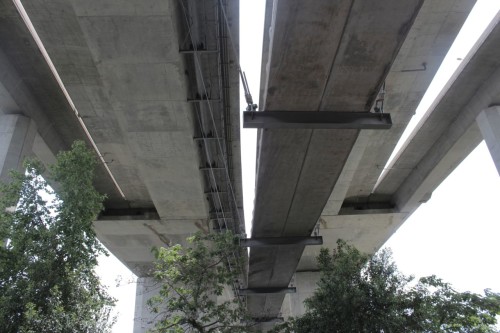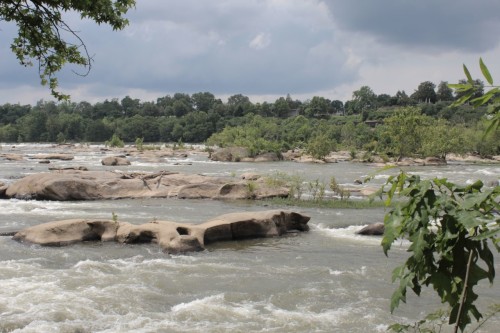Founders: Powhatan Native Americans.
Date: 1973, park created
Location: James R. at US 1/301 (main entrance at Tredegar St)
When one sees the location of Belle Isle, 54 acres rising above the choppy James, connected on shallow days to the shore simply by rock hopping, it is easy to understand Captain John Smith’s original naming of “Broad Rock Island” in 1607. On a summer day countless people can be seen sunbathing on the flat rocks under the shade of trees, just a couple feet out of the rapids’ reach.
The island has had many lives since its discovery by Europeans (and original occupation of Native Americas); it was used as a fishery in the 18th Century, then in 1814 as the location of the Old Dominion Iron and Nail Company. Fifty years later, an entire village occupied the land, and shortly thereafter it served as the site for 30,000 Civil War POW’s, perhaps its most known former purpose. The nail factory returned to the island after the war, and the Virginia Electric Power Company joined them there in the 20th century; Belle Isle was made a park in 1973.
Small lagoons and rock faces are buried in the thick greenery of Belle Isle, a jungle in the geographic center of Richmond. This ‘urban wild’ sensation, reinforced by the presence of great blue herons, ducks, and raccoons is interestingly juxtaposed with views to the city’s skyline, Hollywood Cemetery, and Tredegar Ironworks. The pedestrian walkway, hanging from underneath the Lee Bridge, is a major part of experiencing Belle Isle; a concrete mammoth leading you over the James to the tune of hundreds of cars rushing overhead is a unique event in itself.
Due to its proximity to the city, the park serves as a location for some outdoor Richmond events and concerts, though little construction has been done on the island to encourage these practices. While Belle Isle today contains pedestrian and bike paths, the island is a major focus in the most recent plan for recreational redevelopment along the James, building off the mountain biking, kayaking and rock climbing that naturally occurs there.
M.F.A













Write a Comment